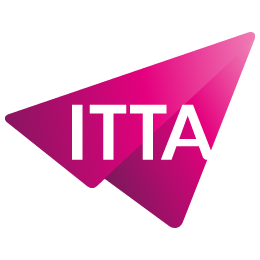Home > Trainings > IT Pro > Cloud Computing > Microsoft 365 Administrator Essentials (MS-102)
Do you want to effectively manage users, secure your data, and optimize services within your Microsoft 365 environment? Our Microsoft 365 Administrator Essentials (MS-102) training will help you master the essential tools to manage your subscriptions, configure custom domains, and ensure identity synchronization within your organization.
You will learn how to maximize security and compliance while ensuring user connectivity. Benefit from official, practical, and comprehensive content that will help you enhance your skills and achieve optimal management of your infrastructure.
Module 1: Configure your Microsoft 365 experience
Module 2: Manage users, contacts, and licenses in Microsoft 365
Module 3: Manage groups in Microsoft 365
Module 4: Add a custom domain in Microsoft 365
Module 5: Configure client connectivity to Microsoft 365
Module 6: Configure administrative roles in Microsoft 365
Module 7: Manage tenant health and services in Microsoft 365
Module 8: Deploy Microsoft 365 Apps for enterprise
Module 9: Analyze your Microsoft 365 workplace data using Microsoft Viva Insights
Module 10: Explore identity synchronization
Module 11: Prepare for identity synchronization to Microsoft 365
Module 12: Implement directory synchronization tools
Module 13: Manage synchronized identities
Module 14: Manage secure user access in Microsoft 365
Module 15: Examine threat vectors and data breaches
Module 16: Explore the Zero Trust security model
Module 17: Explore security solutions in Microsoft 365 Defender
Module 18: Examine Microsoft Secure Score
Module 19: Examine Privileged Identity Management
Module 20: Examine Azure Identity Protection
Module 21: Examine Exchange Online Protection
Module 22: Examine Microsoft Defender for Office 365
Module 23: Manage Safe Attachments
Module 24: Manage Safe Links
Module 25: Explore threat intelligence in Microsoft 365 Defender
Module 26: Implement app protection by using Microsoft Defender for Cloud Apps
Module 27: Implement endpoint protection by using Microsoft Defender for Endpoint
Module 28: Implement threat protection by using Microsoft Defender for Office 365
The MS-102: Microsoft 365 Administrator Essentials training replaces the following courses that have been removed from the Microsoft catalog:
The MS-102 training prepares professionals to become proficient Microsoft 365 administrators. This course covers all the essential tools and features for managing Microsoft 365 services within an organization. Specifically, it includes user management, group management, licensing, as well as configuring administrative roles and security policies. It is a key training for those looking to deepen their skills in Microsoft 365 administration and better understand the underlying processes of its operation.
The MS-102 course is divided into several modules, each focusing on a specific topic for a comprehensive mastery of the platform. Among the covered topics are:
The MS-102 is not particularly difficult, but it does require some familiarity with the Microsoft 365 environment. Concepts such as identity management, directory synchronization, and securing user access may be new to beginners. However, with a methodical approach, each module is designed to offer a gradual increase in skill level. It is important to note that this course is primarily aimed at IT professionals who want to deepen their understanding of Microsoft 365.
As a Microsoft 365 administrator, you are at the heart of your organization’s operations. The MS-102 gives you the skills necessary to professionally configure, manage, and secure a Microsoft 365 environment. It is not only useful for current administrators but also for those looking to specialize in this field. You will gain expertise that sets you apart in the management of modern cloud infrastructures.
Yes, without a doubt. Obtaining the Microsoft 365 Administrator Essentials (MS-102) certification is an excellent investment for your IT career. This course not only allows you to acquire highly sought-after technical skills, but it also validates your ability to autonomously manage all Microsoft 365 services. Additionally, in a professional context where online collaboration and data security are priorities, the MS-102 certification proves that you have the skills to meet these challenges.

Nous utilisons des cookies afin de vous garantir une expérience de navigation fluide, agréable et entièrement sécurisée sur notre site. Ces cookies nous permettent d’analyser et d’améliorer nos services en continu, afin de mieux répondre à vos attentes.
Monday to Friday
8:30 AM to 6:00 PM
Tel. 058 307 73 00
ITTA
Route des jeunes 35
1227 Carouge, Suisse
Monday to Friday, from 8:30 am to 06:00 pm.